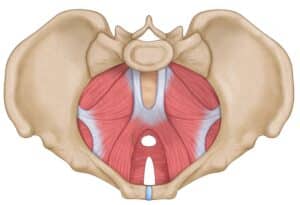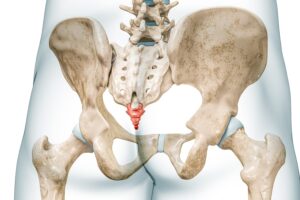🎥 Chapters
00:00 What is Coccyx Pain?
0:08 Understanding Your Coccyx
1:19 Introducing the PiezoWave low energy focused shockwave therapy
1:44 Patient Testimonial: Living with Coccyx Pain
2:30 How Injuries and Conditions Affect Your Coccyx
3:48 Studies and Results on Effectiveness of ESWT for Coccyx Pain
5:19 Regeneration and Pain Relief with Shockwave Therapy
7:15 Does Shockwave Therapy Hurt? How Long Does Relief Last from ESWT?
8:21 Treatment Options and Your Path to Recovery from Coccyx Pain
Tailbone/Coccyx Pain and Shockwave Therapy
With Chiropractor in Los Gatos, San Jose, SF Bay Area, CA

coccyx/tailbone pain
Are you struggling with tailbone pain? Coccyx pain, also known as coccydynia, coccygodynia, or just tailbone pain, can be a significant source of discomfort. Coccyx pain affects everyday activities like sitting and even standing. Because of this impact, Dr Adam Fields from San Jose, California, helps people with coccyx challenges using extracorporeal shockwave therapy.
Extracorporeal shock wave therapy (ESWT) is a non-invasive treatment option that is used for various musculoskeletal conditions, including coccydynia, which is pain in the coccyx (tailbone) region. ESWT from the PiezoWave delivers low-energy focused shockwaves to the affected area, through a device placed on the skin with ultrasound gel. These acoustic waves, or shockwaves, can break up scar tissue or adhesions from previous injuries resulting in a restoration of proper mechanics of the coccyx. In addition, Shockwave therapy can help resolve myofascial trigger points in the muscles surrounding the coccyx. Some of the muscles that might be helped with ESWT are coccygeus, piriformis, gluteus maximus and iliococcygeus muscles. In turn, this can take tension off of the entire tailbone area and allow it to move freely. The result is less coccyx pain.
Shockwave Therapy and Tissue Regeneration

an illustration of superior view of female pelvic
As a result of the sound waves, there is a regenerative aspect of shockwave therapy. There is phenomenon that occurs called, “angiogenesis”. With angiogenesis, there is the proliferation of new blood vessels and this brings more blood to damaged tissue. The blood flow that shockwave therapy stimulates promotes the release of growth factors, which can accelerate tissue repair in the affected area. The result is new collagen to heal tendons, ligaments, cartilage and even bone. Got pain? ESWT may help reduce pain by disrupting pain signals, stimulating the release of endorphins (natural painkillers), and help with inflammation resolution.
Whether you’re seeking relief from coccyx pain or you have other chronic musculoskeletal conditions that you think will never heal, extracorporeal shockwave therapy is worth your investigation. Join us on this healing journey and discover how shockwave therapy could be the solution you’ve been searching for.
Don’t suffer in silence! We want to team up with you.
You can reach Dr Adam Fields for in-person (Los Gatos and San Jose, California) or telehealth appointments here.
About Chiropractor Dr Adam Fields
Dr Adam Fields is a practicing chiropractor in the Bay Area in Northern California and helps people daily in his office with many challenges that can be helped by shockwave therapy from tendinopathies, arthritis, cartilage regeneration, post surgical scar tissue, pelvic pain, altered biomechanics and more. He uses Endonasal Cranial Adjusting, the Muncie Technique, Extracorporeal Shockwave Therapy (ESWT), Class IV Laser Therapy, posture correction, lifestyle modification, muscle work, and other techniques to help his patients.
Need a Pelvic Floor Physical Therapist?

coccyx, tailbone
For those who have greater needs in this area, our office has pelvic floor physical therapist, Tim Sawyer PT ready to help. Tim has been published seven times in reputable journals, is an expert in pelvic pain. He does internal coccyx adjustments and does myofascial trigger point therapy on the surrounding muscles like the levator ani, coccygeus, iliococcygeus and puborectalis.
Shockwave Therapy and Tailbone/Coccyx Pain Research
*The Effects of Extracorporeal Shock Wave Therapy in Patients with Coccydynia: A Randomized Controlled Trial https://journals.plos.org/plosone/article/file?id=10.1371%2Fjournal.pone.0142475&type=printable.
Here’s a 2015 study that compared the benefits of extracorporeal shockwave therapy (ESWT) with other physical modalities and reported that ESWT was more effective in decreasing visual analogue scale pain scores than shortwave diathermy and interferential current. Patients who received ESWT reported greater subjective satisfaction scores with ~ 70% reporting good to excellent satisfaction.
*Extracorporeal shock wave therapy relieved pain in patients with coccydynia: a report of two cases https://www.sciencedirect.com/science/article/abs/pii/S1529943013013594.
I really like this study because it was looking at 2 male patients that had failed at other therapies.
*Effects of Extracorporeal Shock Wave Therapy on Pain in Patients With Chronic Refractory Coccydynia: A Quasi-Experimental Study
https://www.ncbi.nlm.nih.gov/pmc/articles/PMC5098426/.
Here they had 10 patients with cocycgodynia and they stated that ESWT significantly decreased visual analogue scale pain scores at 4 weeks and 2 months post treatment. And I love their statement on why the patients got the relief:
Inflammation in the coccyx and its joint with the sacral vertebra is the proposed mechanism of pain in patients with chronic coccydynia.
80.0% of patients had a trauma to the coccyx.
Musculoskeletal shock waves are not being used to disintegrate tissue but rather to microscopically cause tissue regeneration (20). It is believed that shock wave therapy alleviates pain by the induction of neovascularization That’s new blood vessels (even around the scar tissue) and improvement of blood supply to the tissue and by initiating repairs to the chronically inflamed tissues by tissue regeneration (21). It’s a new generation. (a RE-generation) ESWT produces a regenerative and tissue-repairing effect in musculoskeletal tissues (24).
